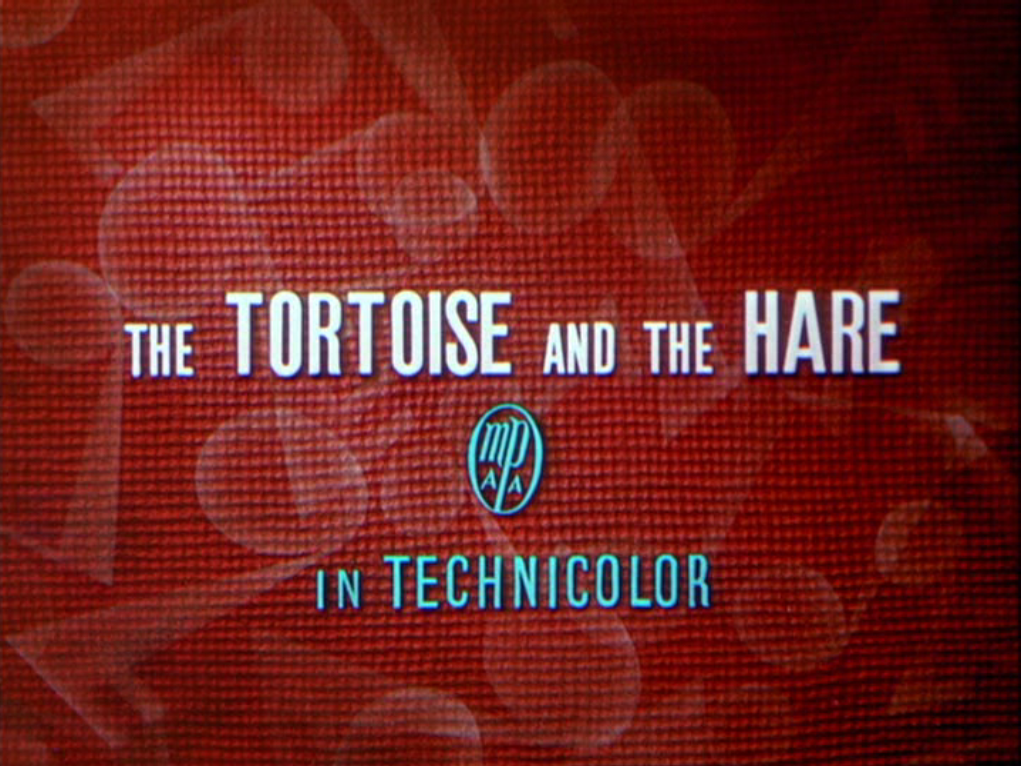Title of the work
Studio / Production Company
Country of the First Edition
Country/countries of popularity
Original Language
First Edition Date
First Edition Details
The Tortoise and the Hare. Directed by Wilfred Jackson, Music by Darrell Calker, Distributed by United Artists. Los Angeles: Walt Disney Productions, January 5, 1935.
Running time
Date of the First DVD or VHS
Awards
1934 – Academy Award for Best Short Subject: Cartoons.
Genre
Adaptations
Animated films
Fables
Short films
Target Audience
Crossover
Cover

The Tortoise and the Hare [title frame], under the Wikimedia Common Rights, Date: 21 February, 2017, Source: Own work, Author: OswaldLR (accessed: July 3, 2018).
Author of the Entry:
Anna Mik, University of Warsaw, anna.m.mik@gmail.com
Peer-reviewer of the Entry:
Elżbieta Olechowska, University of Warsaw, elzbieta.olechowska@gmail.com
Susan Deacy, University of Roehampton, s.deacy@roehampton.ac.uk

Wilfred Jackson
, 1906 - 1988
(Animator, Director)
Wilfred Jackson was an American animator, director and producer. Fascinated by the art of “moving pictures”, he decided to approach Walt Disney and offer him to work for his company for free. As the time in business was difficult, Disney hired the young excentric who much later was hailed a Disney Legend. Apart from being an animator, he had a very useful skill: he knew how to perfectly synchronize sound and picture, a technique developed (among other productions) in several Fantasia sequences. After assisting Ub Iwerks (the legendary creator of Mickey Mouse), he got promoted and became a director/co-director of many classic Disney movies, such as: Snow White and the Seven Dwarfs, Peter Pan or Sleeping Beauty. Poor health forced him to retire in 1961.
Source:
Smith, Dave, ed., “Wilfred Jackson” (entry); in Disney A to Z: The Official Encyclopedia, 4th ed., Glendale: Disney Books, 2015.
Bio prepared by Anna Mik, University of Warsaw, anna.m.mik@gmail.com
Summary
As with the short animation based on the Aesop’s fable The Hare and the Tortoise the plot is quite simple. In the woods of Disney’s creation, a big race has been organized. The competition takes place between Max Hare and Toby Tortoise. The former, inspired by boxer Max Baer, is obviously more athletic, but also cocky and overconfident, not to mention rude; as for the latter, he is clumsy and slow, but also nicer and more focused on the task – he does not care about the mockery and does not hold grudges. Both characters wear robes that they drop before the race: Max’s says: “The Blue Streak,” and Toby’s: “Slow but sure” – which already settles the plot based on the fight between these two personalities.
The race does not begin well for Toby, as Max quickly overtakes him and pretends to take a nap along the way – just to mess with his opponent. Then Max gets really distracted by the girl-bunnies that just like mythical sirens lure him off the track, and make him show off his skills. The bunnies also try to seduce Toby, but he politely refuses, as his main task now is to win the race. While Max is playing tennis (with himself) to impress the ladies, Toby is getting closer to the finish line, and, eventually, wins the race.
Analysis
We find this animation between two other inspired by antiquity: The Goddess of Spring (1934) and The Golden Touch (1935, both can be found in the survey). It might be claimed that classical tradition had a great impact on the director Wilfred Jackson. All dialogues are rhymed, which corresponds to the tradition of the Aesopian tale. Thanks to this, Disney’s short functions now as one of the fables from its own collection, updated and tailored to the needs of today’s recipients.
Another set of “fables” was also produced within the series Merrie Melodies (1931-1969) by Warner Bros. Pictures. There we find not only the Bugs Bunny inspired by Max Hare, but also another version of the same Aesopian tale titled: Tortoise Beats Hare from 1941 directed by Tex Avery. This story seems to be very attractive for the creators of short cartoons, as it offers both a valuable lesson for the young audience and as an opportunity for inserting a lot of slap-stick jokes, very popular within this format.
Disney also produced: Toby Tortoise Returns in 1936, where Max and Toby are having a boxing match.
Further Reading
Bradley, Edwin M., The First Hollywood Sound Shorts, 1926–1931, Jefferson: McFarland, 2009.
Cavalier, Stephen, The World History of Animation, Oakland: University of California Press, 2011.
Cohen, Karl F., Forbidden Animation. Censored Cartoons and Blacklisted Animators in America, Jefferson, London: McFarland, 1997.
Meritt, Russel and J. B. Kaufman, Walt Disney’s ‘Silly Symphonies’: A companion to the Classic Cartoon Series, Gemona: La Cineteca del Friuli, 2006.
Moen, Kristian, Film and Fairy Tales. The Birth of Modern Fantasy, London, New York: I.B. Tauris, 2013.
Smith, Dave, ed., “Wilfred Jackson” (entry); in Disney A to Z: The Official Encyclopedia, 4th ed., Glendale: Disney Books, 2015.
Smith, Dave, ed., “The Tortoise and the Hare” (entry); in Disney A to Z: The Official Encyclopedia, 4th ed., Glendale: Disney Books, 2015.
Addenda
Translations:
Many language versions
Date of the First DVD or VHS Edition:
VHS
- Walt Disney Cartoon Classics: More of Disney's Best: 1932-1946.
- Walt Disney Cartoon Classics: Starring Animals Two by Two.
- Walt Disney's Fables: Volume 4.
DVD
- Walt Disney Treasures: Silly Symphonies.
- Timeless Tales, Volume 1.
- Walt Disney Animation Collection: Classic Short Films, Vol. 4: The Tortoise and the Hare.
- Walt Disney's Fables: Volume 4.


